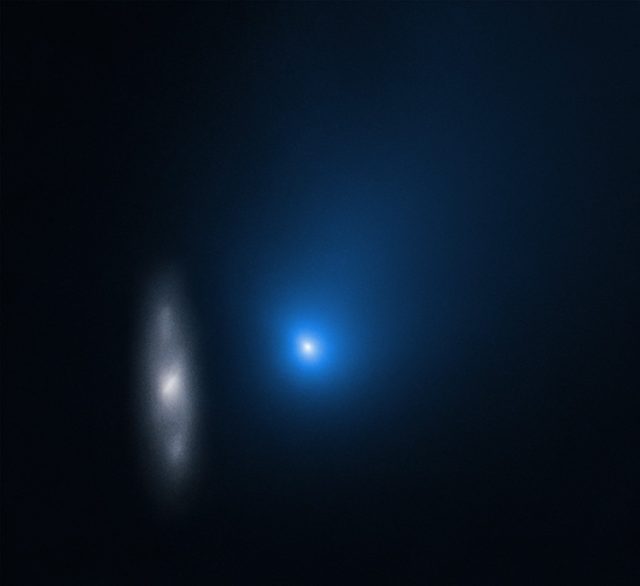
On October 17 and 18, 2017, an unusual object sped across the field of view of a large telescope perched near the summit of a volcano on the Hawaiian island of Maui. The Pan-STARRS1 telescope was designed to survey the sky for transient events, like asteroid or comet flybys. But this was different: The object was not gravitationally bound to the Sun or to any other celestial body. It had arrived from somewhere else.
The mysterious object was the first visitor from interstellar space observed passing through the Solar System. Astronomers named it 1I/‘Oumuamua, borrowing a Hawaiian word that roughly translates to “messenger from afar arriving first.” Two years later, in August 2019, amateur astronomer Gennadiy Borisov discovered the only other known interstellar interloper, now called 2I/Borisov, using a self-built telescope at the MARGO observatory in Nauchnij, Crimea.
While typical asteroids and comets in the Solar System orbit the Sun, ‘Oumuamua and Borisov are celestial nomads, spending most of their time wandering interstellar space. The existence of such interlopers in the Solar System had been hypothesized, but scientists expected them to be rare. “I never thought we would see one,” says astrophysicist Susanne Pfalzner of the Jülich Supercomputing Center in Germany. At least not in her lifetime.
With these two discoveries, scientists now suspect that interstellar interlopers are much more common. Right now, within the orbit of Neptune alone, there could be around 10,000 ‘Oumuamua-size interstellar objects, estimates planetary scientist David Jewitt of UCLA, coauthor of an overview of the current understanding of interstellar interlopers in the 2023 Annual Review of Astronomy and Astrophysics.
Researchers are busy trying to answer basic questions about these alien objects, including where they come from and how they end up wandering the galaxy. Interlopers could also provide a new way to probe features of distant planetary systems.
But first, astronomers need to find more of them.
“We’re a little behind at the moment,” Jewitt says. “But we expect to see more.”

Alien origins
At least since the beginning of the 18th century, astronomers have considered the possibility that interstellar objects exist. More recently, computer models have shown that the Solar System sent its own population of smaller bodies into the voids of interstellar space long ago due to gravitational interactions with the giant planets.
Scientists expected most interlopers to be exocomets composed of icy materials. Borisov fit this profile: It had a tail made of gases and dust created by ices that evaporated during its close passage to the Sun. This suggests that it originated in the outer region of a planetary system where temperatures were cold enough for gases like carbon monoxide to have frozen into its rocks. At some point, something tossed Borisov, roughly a kilometer across, out of its system.
One potential culprit is a stellar flyby. The gravity of a passing star can eject smaller bodies, known as planetesimals, from the outer reaches of a system, according to a recent study led by Pfalzner. A giant planet could also eject an object from the outer regions of a planetary system if an asteroid or comet gets close enough for the planet’s gravitational tug to speed up the smaller body enough for it to escape its star’s hold. Close approaches can also happen when planets migrate across their planetary systems, as Neptune is thought to have done in the early Solar System.
